A deep dive into Unreal Engine 5's Chaos Destruction system
The goal of this project was to expand my knowledge and experience with unreal engine 5.
Unreal Engine is very unique. No other engines I have tried are quite like it. I has a lot of very powerful tools that come pre-packaged with it, the one that interested me most; the chaos destruction system.
During my time of experimentation I was working on a project that involved the use of grenades and explosives. I had always loved explosions and nothing is more satisfying than seeing a cool explosion with environment destruction. However there was limited information on how to go about creating what I envisioned, but this is fairly common for Unreal Engine and should not discourage you.

A demonstartion of a projectile impact causing an box to fracture and break
Source: Epic Games
While there were extensive guides on how to make projectiles themselves cause breakage, there was far less on creating a radial impulse that an explosion would have. So I had to do some experimenting. But I won't bore you with the details, instead this was my first (working!) attempt:

Slowed for effect
The use cases of this are pretty extensive given you have the computational budget, as they can add a ton to explosions and also make it look so much cooler.

Not bad... Not bad
Creation
This is how I created my actor, and the components I attached.
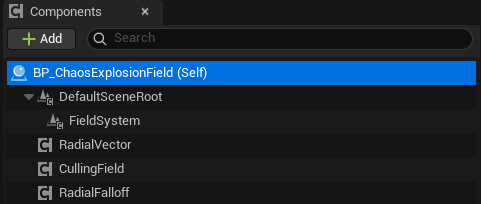
This is the setup I chose for making my blueprint actor
Here is the blueprint graph which I will explain:
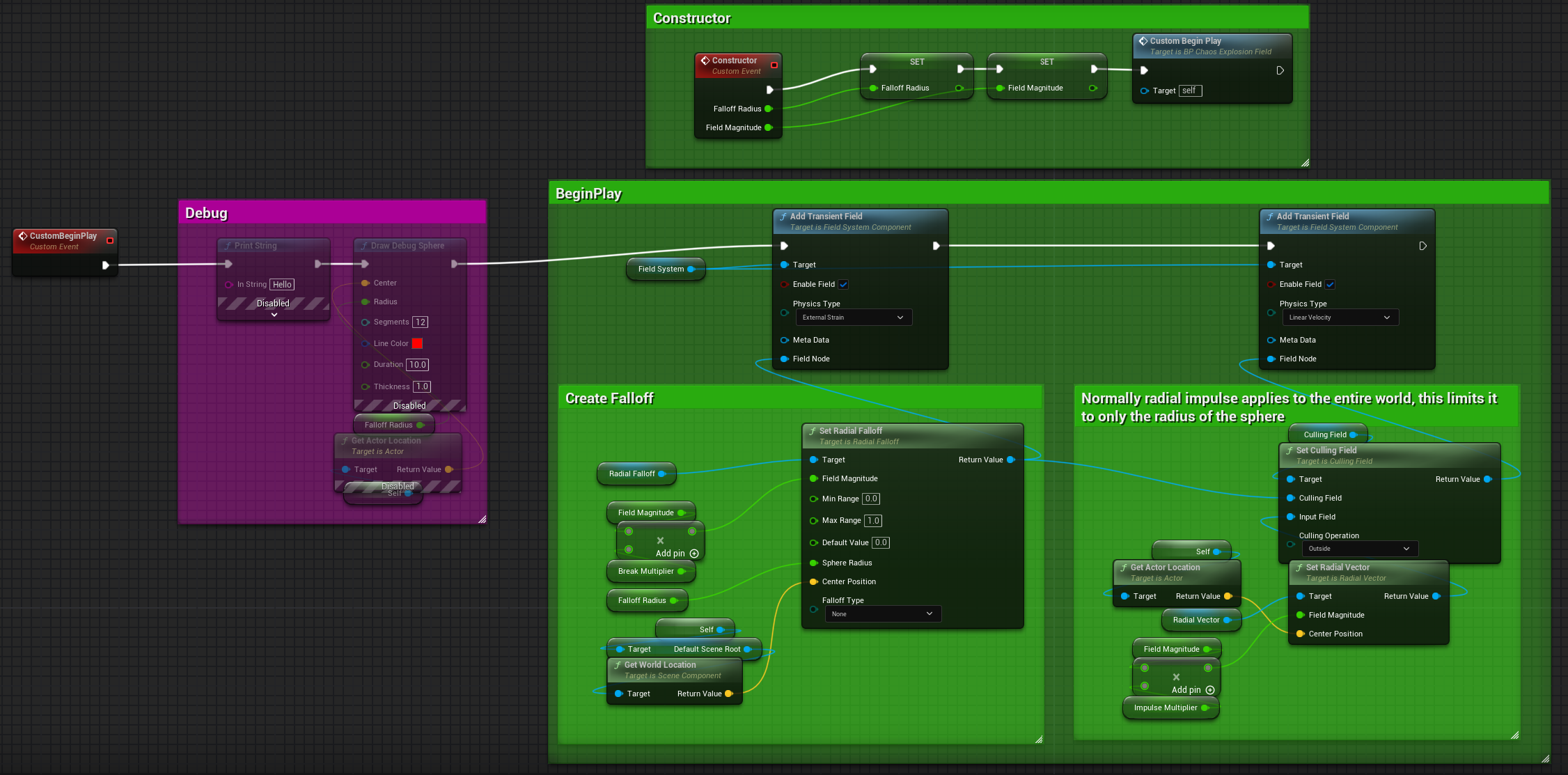
This is the setup for the eventgraph of the blueprint
Firstly we need to create a transient field, and create it using a "set radial falloff" node, which I am using the grenade's explosion radius and magnitude to pass into the ChaosExplosionField object. This initial node handles the breaking force that's being applied. An important note here is this has nothing to to do with impulse, only causes an object to be able to break.
The second transient field we add is what adds linear velocity scaled by the distance to the center of the explosion, however it's crucial to note that if you do not use a culling field it will have infinite radius.
Re-usability
Firstly to make our ChaosField have an effect on something we need to define how it fractures.

Once you selected the actor you want to fracture change to the fracture mode
Next step is to create a fracture asset:
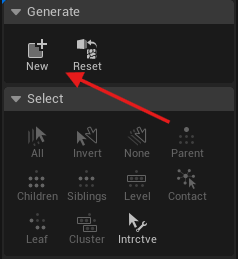
Once fracture mode is enabled a new side panel will show up with the new button.
You should see a pop-up, we can just leave all this default.
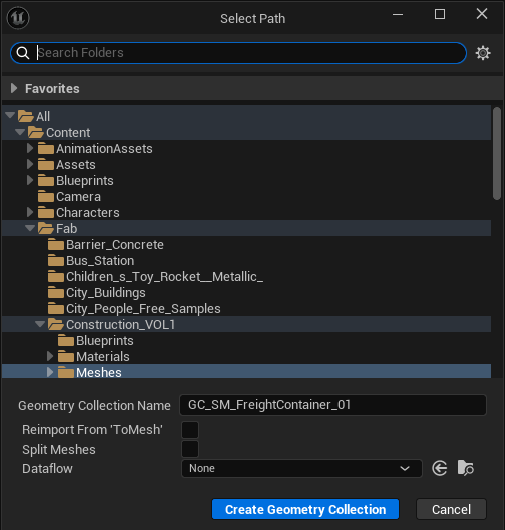
The pop-up in question:
Next we can go apply a type of fracture, for this I chose uniform.
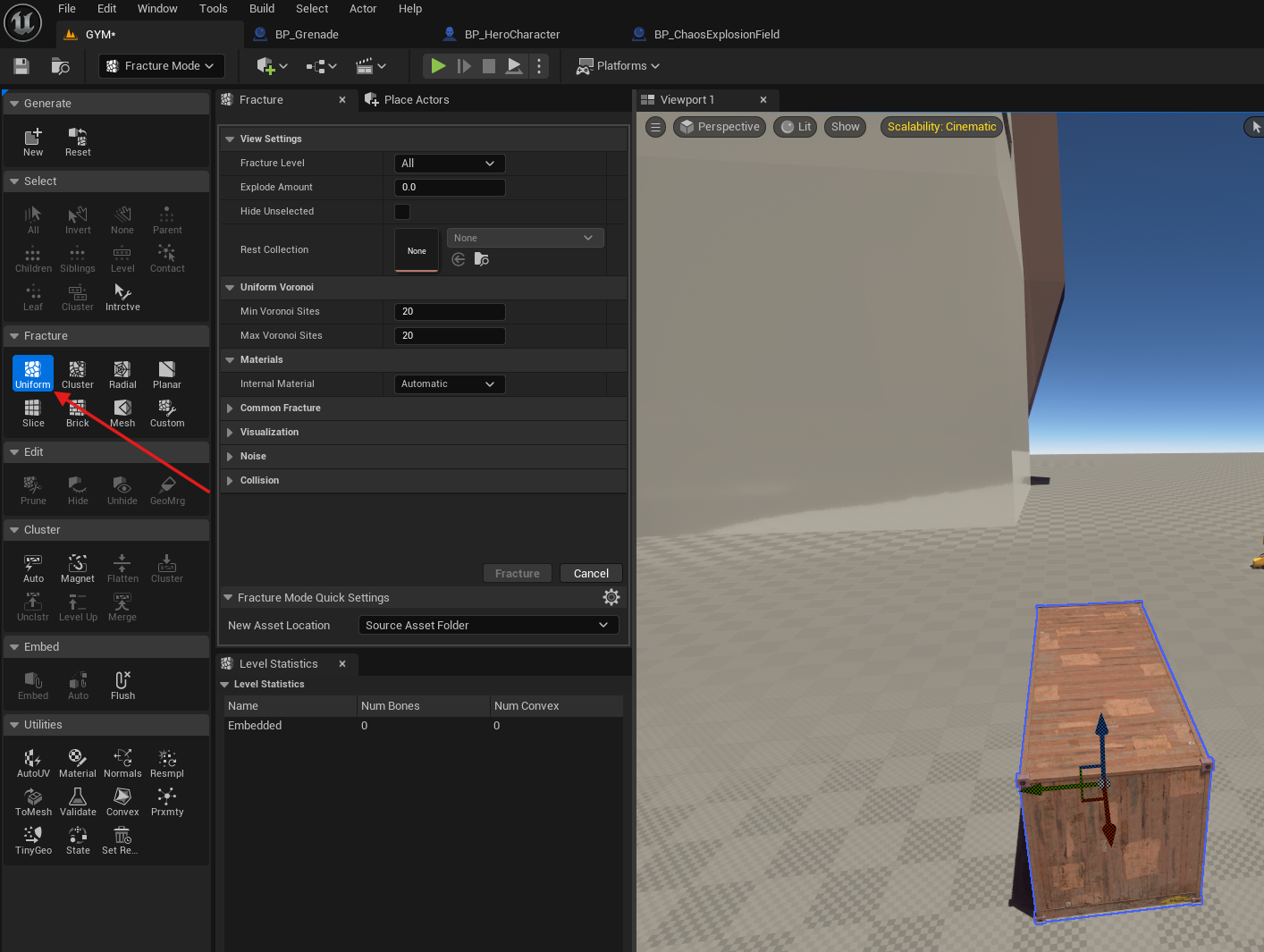
You can find this under the fracture sub-category.
And we have our final result!
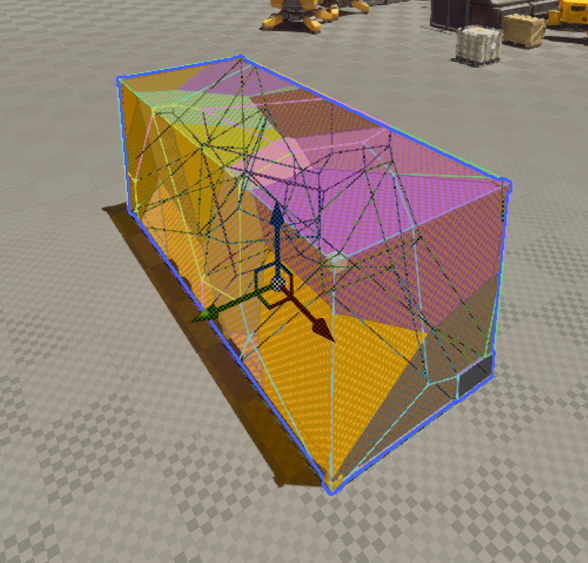
All those lines you see are the subdivisons of each piece it will break into.
Lastly we can uncheck "Show Bone Colors" and then go ahead and blow up our new fractured object.

Kaboom